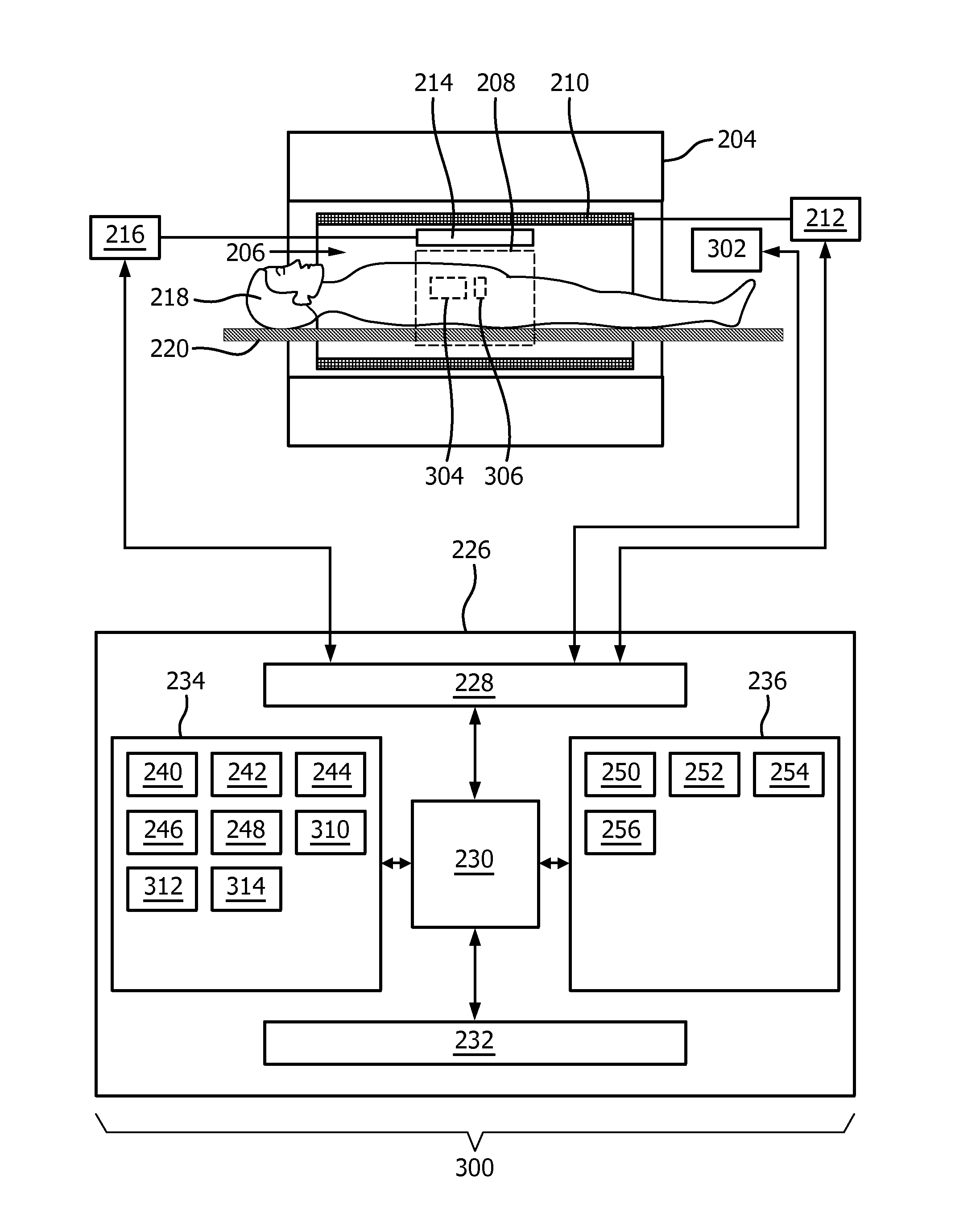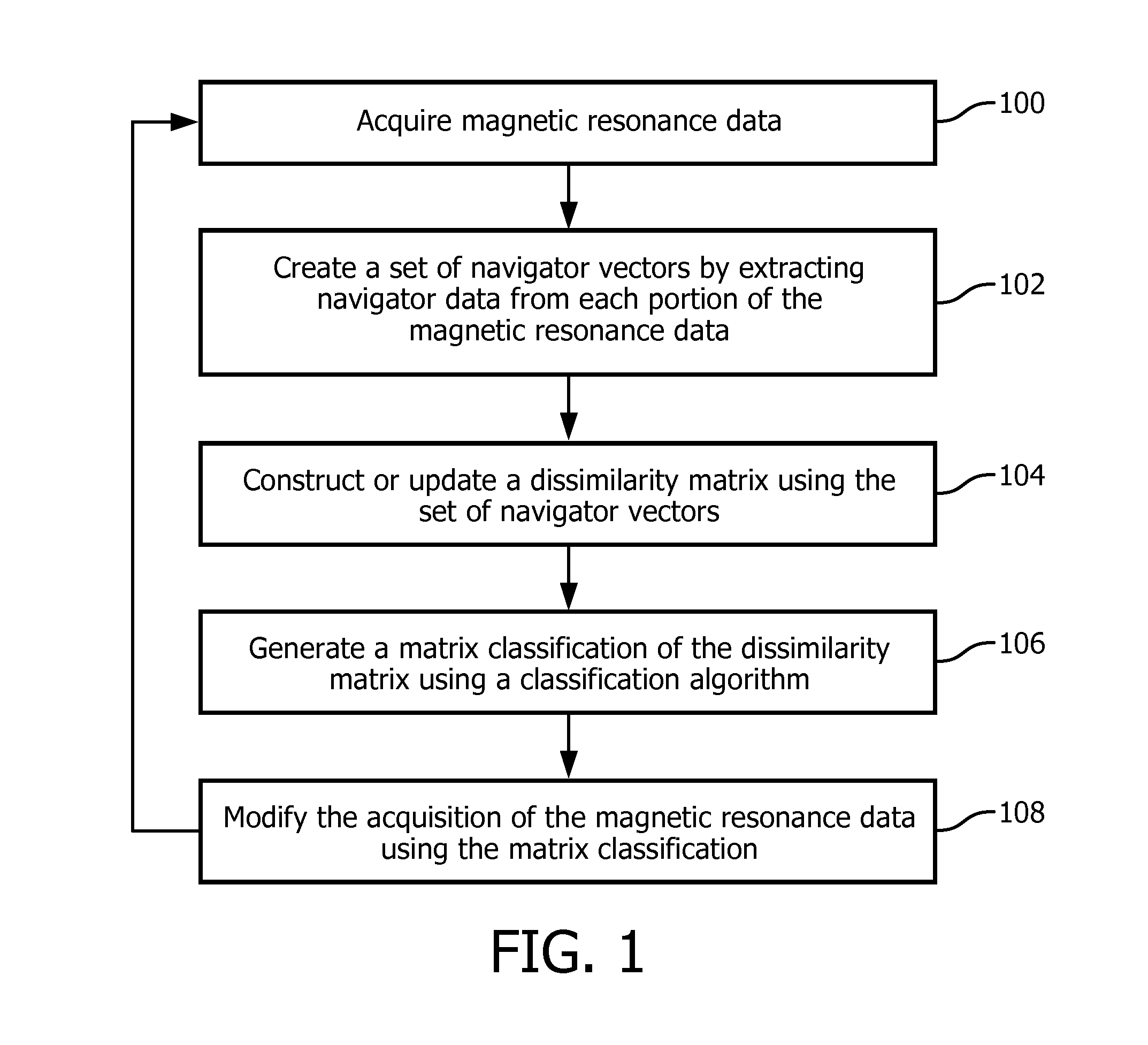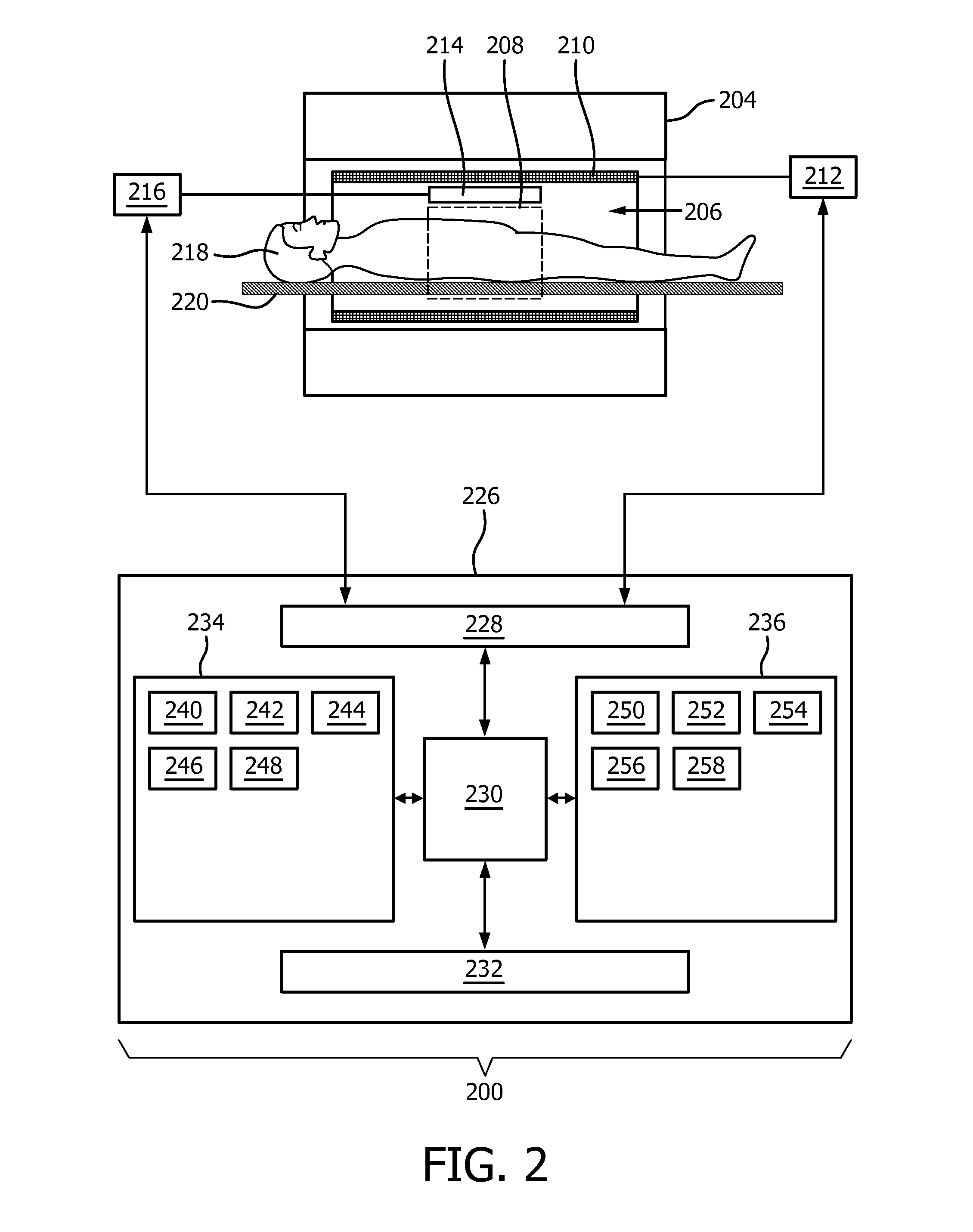Magnetic resonance imaging system with navigator-baed motion detection
a magnetic resonance imaging and navigator-baed technology, applied in the field of magnetic resonance imaging, can solve the problems of impracticality, compromise the diagnostic quality of the resulting image, and patient motion remains an important factor, and achieve the effect of generating magnetic resonance images more quickly
- Summary
- Abstract
- Description
- Claims
- Application Information
AI Technical Summary
Benefits of technology
Problems solved by technology
Method used
Image
Examples
Embodiment Construction
[0072]Like numbered elements in these figures are either equivalent elements or perform the same function. Elements which have been discussed previously will not necessarily be discussed in later figures if the function is equivalent.
[0073]FIG. 1 shows a flow diagram which illustrates a method according to an embodiment of the invention. First in step 100 magnetic resonance data is acquired. The magnetic resonance system acquires a portion of the magnetic resonance data. Each portion of the magnetic resonance data comprises navigator data. Next in step 102 a set of navigator vectors are created by extracting navigator data from each portion of the magnetic resonance data. Next in step 104 a dissimilarity matrix is calculated using a metric between each of the set of navigator vectors. As this is an iterative process the dissimilarity matrix may simply be updated from a previous version by adding newly acquired navigator vectors and calculating the dissimilarity between the existing ...
PUM
 Login to View More
Login to View More Abstract
Description
Claims
Application Information
 Login to View More
Login to View More - R&D
- Intellectual Property
- Life Sciences
- Materials
- Tech Scout
- Unparalleled Data Quality
- Higher Quality Content
- 60% Fewer Hallucinations
Browse by: Latest US Patents, China's latest patents, Technical Efficacy Thesaurus, Application Domain, Technology Topic, Popular Technical Reports.
© 2025 PatSnap. All rights reserved.Legal|Privacy policy|Modern Slavery Act Transparency Statement|Sitemap|About US| Contact US: help@patsnap.com



